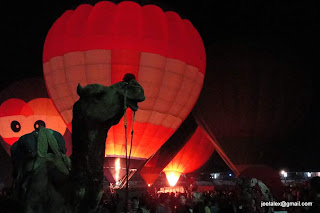Every November, in the pond-sized sleepy town of Pushkar, India comes alive with a riot of colors and a frenzied burst of activity, attracting visitors from around the globe to the famous Camel Fair.
(The complete article was featured in Little India, a US publication...)
| ||
Renowned for hosting the world’s largest camel fair, the quiet town of Pushkar exhibits a rare and fascinating combination of religious fervor and cultural effervescence every November. Around 50,000 camels are sold, decorated, shaved and raced during the Pushkar Fair, the largest cattle fair in the world.
The ambience evoked during the seven-day festival is that of rustic Rajasthan, more so of rural India — vibrant, colorful and quintessentially Indian. Bards and poets recite and sing tales of valor and heroism of bygone days. Singers and dancers stage folk performances throughout the day. Various competitions, such as turban tying, tilak, water pot race, mandna, langari taang, Indian bride, moustache, and wrestling, etc., enliven the event. “I like the turban tying and tilak competition. They are so Indian,” said Daniel Schwenegger, a tourist from Denmark. In addition, many animal competitions, such as camel decoration, camel dance, horse dance, fast milking, gir and cross-breed and champion cattle contests delight visitors. “The lumbering beast of burden, the camel all decorated in finery, imagines itself to be an ostrich, and rushes through the race like one. It’s such fun. I have never seen anything like this before,” said Australian college student, Diana Wheat. (To read the complete article, visit the site of Little India, a US publication...) |
PUSHKAR: World’s Largest Cattle Fair
Reverse Take
|
Subscribe to:
Comments (Atom)







